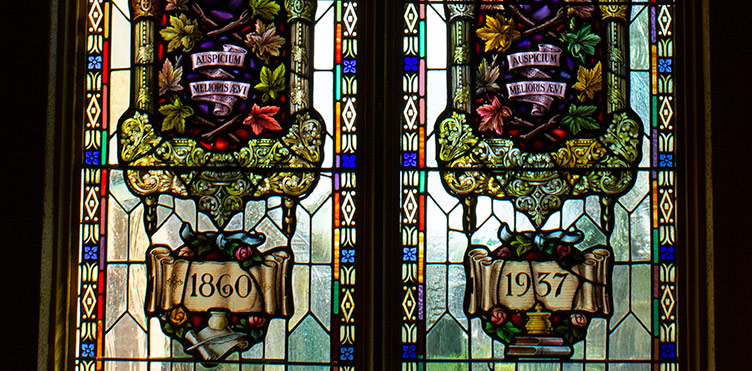The Institute of Biomedical Engineering (IBME) at UNB has added a new space for the Centre for Adaptive Rehabilitation Engineering thanks to the generosity of alumnus Bob Pickett (BSc CE '61, MSc CE '63) and his wife, Barbara.
The Picketts' leadership gift of $400,000, announced in October 2018, leveraged $4.5 million from the Province of New Brunswick and the Canada Foundation for Innovation. This funding was used to construct a new wing at R.N. Scott Hall and to purchase the technology that will support world-class research.
Director of IBME Dr. Jon Sensinger said that the new research facility, due to officially open in the spring, will allow UNB researchers to take neurological rehabilitation to the next level, helping to better understand how the human brain repairs itself and adapts in order to restore function to the body following traumatic injury or disease.
"This will be a state-of-the-art facility equipped with a virtual reality lab, a mobility lab and a fully-instrumented daily living lab, which is a mock home with kitchen, bathroom, bedroom and other common spaces," said Sensinger. "These lab spaces will be supported by robotic equipment, such as an overhead-mounted zero gravity system, to provide support for patients who cannot fully stand under their own power. And because the zero gravity system is highly adjustable, it will enable rehabilitation programs to be tailored to the needs of individual patients."
Bob and Barbara Pickett were first inspired to support IBME when they attended a research symposium during UNB's Homecoming a few years ago. Bob's aunt lost an arm and a leg due to an accident in her youth, and the Institute's work on prostheses and physical rehabilitation made him think of what would have been possible if she had had access to today's technology and rehabilitation services. When the Picketts learned that IBME was planning an expansion project contingent upon government funds being bolstered by gifts from private donors, they knew that this was the right place to invest.
"Rehabilitation is something that means a great deal to both of us, and we are pleased to support a world-class initiative right here in our province," said Bob Pickett.
"This facility will serve as a research centre where therapists and biomedical engineers can study ways of optimizing recovery programs for people with brain injuries," said then-UNB President and Vice-Chancellor Eddy Campbell. "These innovations will help transform how rehabilitation is delivered in New Brunswick and lower the health-care costs associated with the province's aging population. We are grateful for Bob and Barbara Pickett's support for this project."
Bob Pickett holds both bachelor's and master's degrees in civil engineering from UNB and Barbara is a graduate of the New Brunswick Teacher's College (now part of UNB). Mr. and Mrs. Pickett have supported a number of initiatives at UNB in the past, including scholarships. In recognition of the pivotal role that the Picketts have played in the creation of the Centre for Adaptive Rehabilitation Engineering, the new wing that will house the centre will be named after them.
The freshly restored windows at UNB Fredericton’s Memorial Hall were unveiled at a public celebration in October 2018.
While the work officially began in 2016, UNB Art Centre director Marie Maltais had been searching for a qualified conservator and raising funds since 2011. Essential to the project was a stained glass artist who had the knowledge and expertise to work with old glass on an architectural scale.
Miraculously, stained glass artist Ned Bowes calls the Fredericton region home.
Bowes, who was awarded the title of maitre de vitreux, or master of stained glass, from the American Stained Glass Institute in 1980, has almost 40 years of experience working on large restoration projects around North America.
"All of these windows are just oozing with knowledge, with history," said Bowes. "There's a message in every window and it's there for the person looking at it.”
The seven stained glass windows were installed between 1926 and 1943 and are dedicated to fallen soldiers, literary figures, former UNB professors and prominent New Brunswickers.
Some of the original windows had been too large for their frames and needed to be chiseled out. Others had holes that were patched up with cement, covering entire sections of glass. One particular window required 200 hours of restoration.
"The windows tell the stories of those long gone," said Maltais. "They have the power to inspire and to challenge. They make visible art connections to the past."